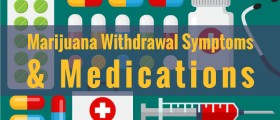Loading...
Sub W/D is real. Whoever wrote that it isn't a narcotic and non-habit forming is a complete and un-educated FOOL. One thing I don't agree with -- some people say the W/D is as bad as the "other" hard-core opiates. Nothing, I mean NOTHING compares to the W/D of Oxy, heroin, VIcoden. I damn near had the Suboxone W/D whipped by day 5 and then my DOC gave me another 'script. One thing I did in the first couple days that I read and didn't think would help--HOT SHOWERS!. Just get in there, set the temp to your desire, and just sit down. This is unbelievably effective. When the hot water runs out just get out, sit down on the couch, let the water warm up again, and repeat. It really feels good and gives you something to look forward to in this restless time that is W/D. I wish I had a gym membership 'cuz I would have had my butt in the sauna with a huge jug of Gatorade. I started out on 8 mg a day and am down to 4 mg now. I totally used my last 'script up like a week early and that is why I got thrown into the world of W/D. I was way tempted to just stay off of it 'cuz I really had the worst of it licked. I could actually feel my brain actually re-wiring itself i.e., Smiling, laughing, imaginative.
***this post is edited by moderator *** inappropriate posting*** Please read our Terms of Use
Loading...
Loading...
Loading...
Loading...
Loading...
Loading...
Loading...
Loading...
Loading...
In October 2002, the Food and Drug Administration (FDA) approved two buprenorphine products (Suboxone® and Subutex®) for the treatment of narcotic addiction. Both products are high dose (2 mg and 8 mg) sublingual (under the tongue) tablets: Subutex® is a single entity buprenorphine product and Suboxone® is a combination product with buprenorphine and naloxone in a 4:1 ratio, respectively. After reviewing all the available data and receiving a schedule III recommendation from the Department of Health and Human Services (DHHS), the DEA placed buprenorphine and all products containing buprenorphine into schedule III in 2002. Since 2003, diversion, trafficking and abuse of buprenorphine have become more common in the United States."
Yes it is. 1. What are Suboxone and Subutex?
Subutex and Suboxone are medications approved for the treatment of opiate dependence. Both medicines contain the active ingredient, buprenorphine hydrochloride, which works to reduce the symptoms of opiate dependence.
2. Why did the FDA approve two medications?
Subutex contains only buprenorphine hydrochloride. This formulation was developed as the initial product. The second medication, Suboxone contains an additional ingredient called naloxone to guard against misuse.
Subutex is given during the first few days of treatment, while Suboxone is used during the maintenance phase of treatment.
3. Will most prescriptions be for the Suboxone formulation?
Yes, Suboxone is the formulation used in the majority of patients.
4. How are Subutex and Suboxone different from the current treatment options for opiate dependence such as methadone?
Currently opiate dependence treatments like methadone can be dispensed only in a limited number of clinics that specialize in addiction treatment. There are not enough addiction treatment centers to help all patients seeking treatment. Subutex and Suboxone are the first narcotic drugs available under the Drug Abuse Treatment Act (DATA) of 2000 for the treatment of opiate dependence that can be prescribed in a doctor’s office. This change will provide more patients the opportunity to access treatment.
5. What are some possible side effects of Subutex and Suboxone?
(This is NOT a complete list of side effects reported with Suboxone and Subutex. Refer to the package insert for a more complete list of side effects.)
The most common reported side effect of Subutex and Suboxone include:
cold or flu-like symptoms
headaches
sweating
sleeping difficulties
nausea
mood swings.
Like other opioids Subutex and Suboxone have been associated with respiratory depression (difficulty breathing) especially when combined with other depressants.
6. Are patients able to take home supplies of these medicines?
Yes. Subutex and Suboxone are less tightly controlled than methadone because they have a lower potential for abuse and are less dangerous in an overdose. As patients progress on therapy, their doctor may write a prescription for a take-home supply of the medication.
7. How will FDA know if these drugs are being misused, and what can be done if they are?
FDA has worked with the manufacturer, Reckitt-Benckiser, and other agencies to develop an in-depth risk-management plan. FDA will receive quarterly reports from the comprehensive surveillance program. This should permit early detection of any problems. Regulations can be enacted for tighter control of buprenorphine treatment if it is clear that it is being widely diverted and misused.
8. What are the key components of the risk-management plan?
The main components of the risk-management plan are preventive measures and surveillance.
Preventive Measures include:
education
tailored distribution
Schedule III control under the Controlled Substances Act (CSA)
child resistant packaging
supervised dose induction
The risk management plan uses many different surveillance approaches. Some active methods include plans to:
Conduct interviews with drug abusers entering treatment programs.
Monitor local drug markets and drug using network areas where these medicines are most likely to be used and possibly abused.
Examine web sites.
Additionally data collection sources can indicate whether Subutex and/or Suboxone are implicated in abuse or fatalities. These include:
DAWN—The Drug Abuse Warning Network. This is run by the Substance Abuse and Mental Health Services Administration (SAMHSA) which publishes a collection of data on emergency department episodes related to the use of illegal drugs or non-medical use of a legal drug.
CEWG—Community Epidemiology Working Group. This working group has agreed to monitor buprenorphine use.
NIDA—National Institute of Drug Abuse. NIDA will send a letter to their doctors telling them to be aware of the potential for abuse and to report it if necessary.
9. Who can prescribe Subutex and Suboxone?
Only qualified doctors with the necessary DEA (Drug Enforcement Agency) identification number are able to start in-office treatment and provide prescriptions for ongoing medication. CSAT (Center for Substance Abuse Treatment) will maintain a database to help patients locate qualified doctors.
10. How will Subutex and Suboxone be supplied?
Both medications come in 2 mg and 8 mg strengths as sublingual (placed under the tongue to dissolve) tablets.
11. Where can patients get Subutex and Suboxone?
These medications will be available in most commercial pharmacies. Qualified doctors with the necessary DEA identification numbers will be encouraged to help patients locate pharmacies that can fill prescriptions for Subutex and Suboxone.
12.Where can I go for more information?
see love...we wouldn't have to invent more..."MIRACLE DRUGS" if people could control themselves to begin with. Suboxone are addictive just like everything else. So before you go talking about something you do not know maybe you should do some research huh?
Loading...
Loading...
Loading...
Loading...
Loading...



_f_280x120.jpg)












